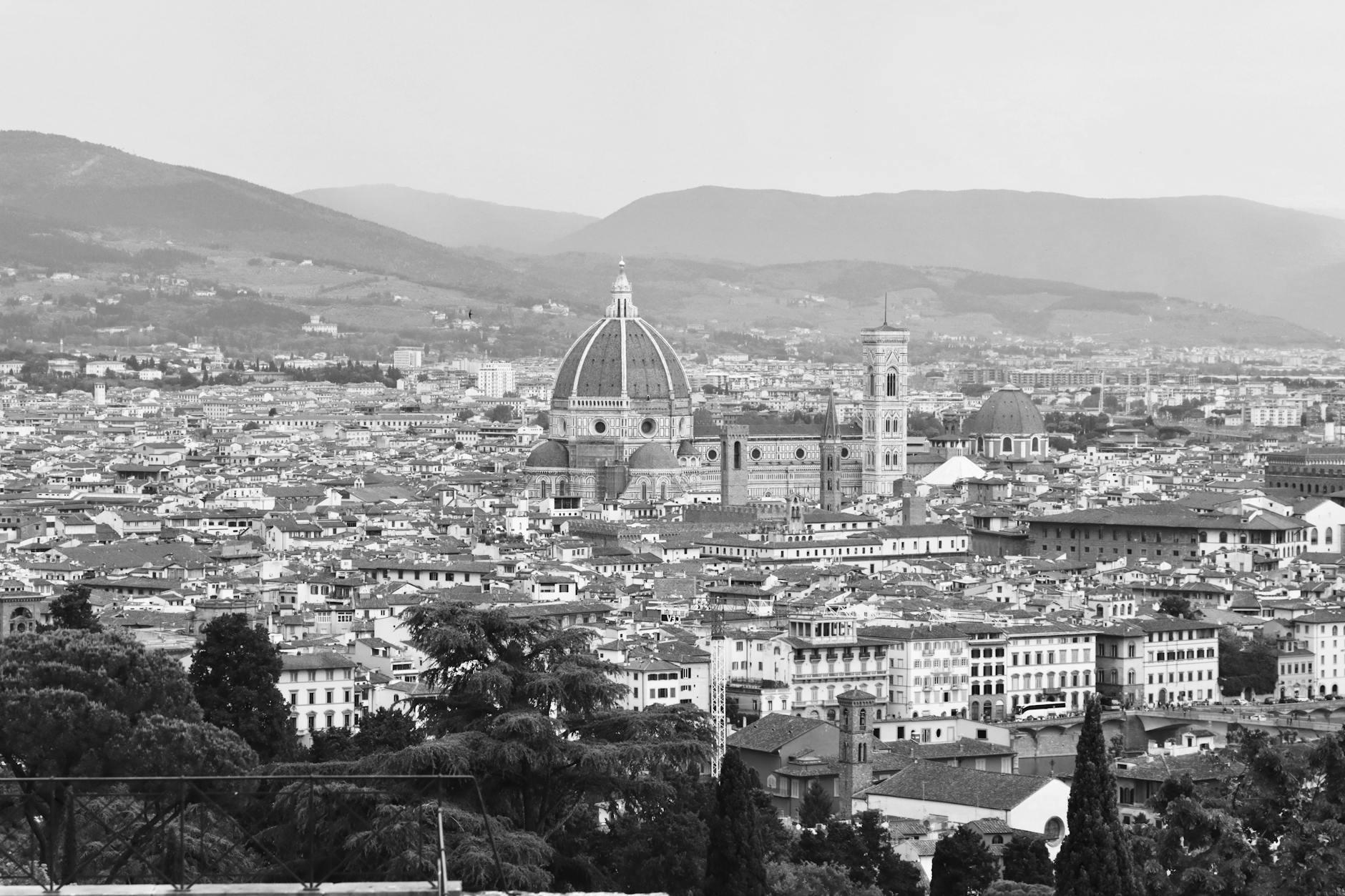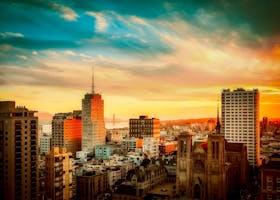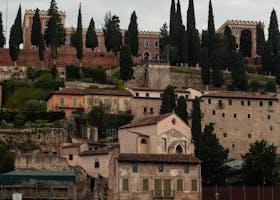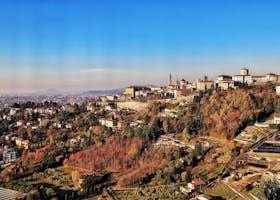Top 10 Must-Visit Attractions in Florence: September 2024
Posted on September 7, 2024 • 12 minutes • 2421 words
Table of contents
Ah, Florence! This gem in the heart of Italy is a paradise for those who revel in the splendor of art, history, and exquisite Italian cuisine. Known for its breathtaking architecture and as the cradle of the Renaissance, Florence attracts millions from around the globe. While summer is the peak time for visitors, eager to bask under the Tuscan sun, Florence offers an enchanting experience year-round. With each season unveiling a unique aspect of the city’s beauty and charm, there’s always something magnificent to discover. From the golden hues of autumn embellishing the cityscape to the festive lights that adorn the streets in winter, Florence is truly a destination for all seasons. Whether you’re a history enthusiast, an art lover, or someone who appreciates fine food and wine, get ready to embark on an unforgettable journey through the top 10 must-visit attractions in Florence. Let this ultimate travel guide lead the way to the heart of Italian culture and beauty.
10 best things to see in Florence
10. San Miniato al Monte
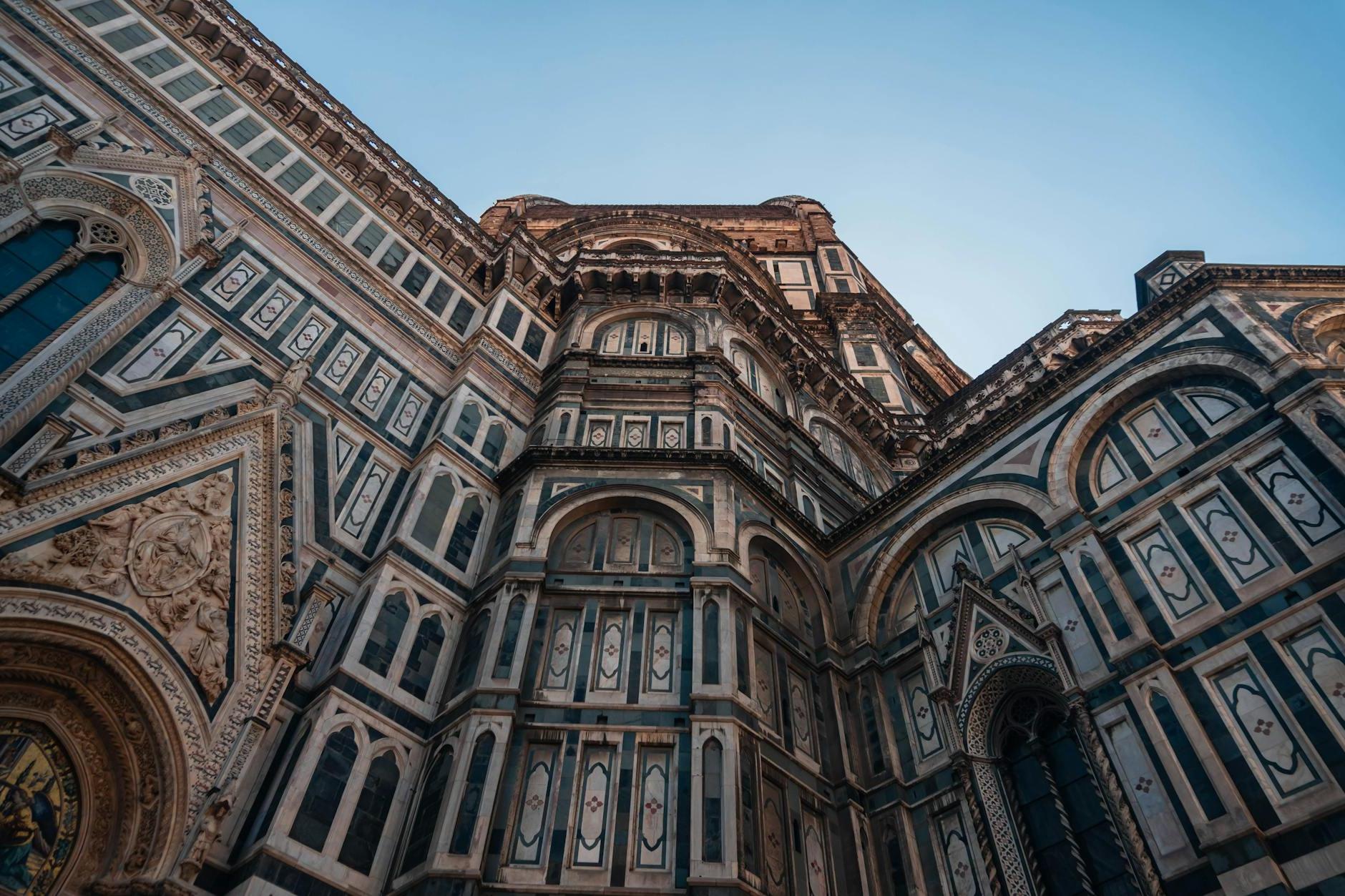
When you’re exploring Florence, a must-see gem is San Miniato al Monte. This stunning basilica, perched high above the city, offers not just architectural beauty but also panoramic views of Florence that you shouldn’t miss. Getting there is straightforward: you can take a pleasant walk up from the Piazzale Michelangelo, renowned for its own impressive vistas. As you make your way to San Miniato al Monte, prepare to be greeted by a façade that’s a masterpiece of Florentine Romanesque architecture. Once inside, pay special attention to the elaborately decorated chapel, the beautiful mosaic work above the altar, and the historic crypt. Each of these elements tells a unique story of Florence’s rich history and artistic heritage. So, when in Florence, make the journey to San Miniato al Monte; it’s an experience that beautifully blends art, history, and breathtaking views.
9. Palazzo Pitti
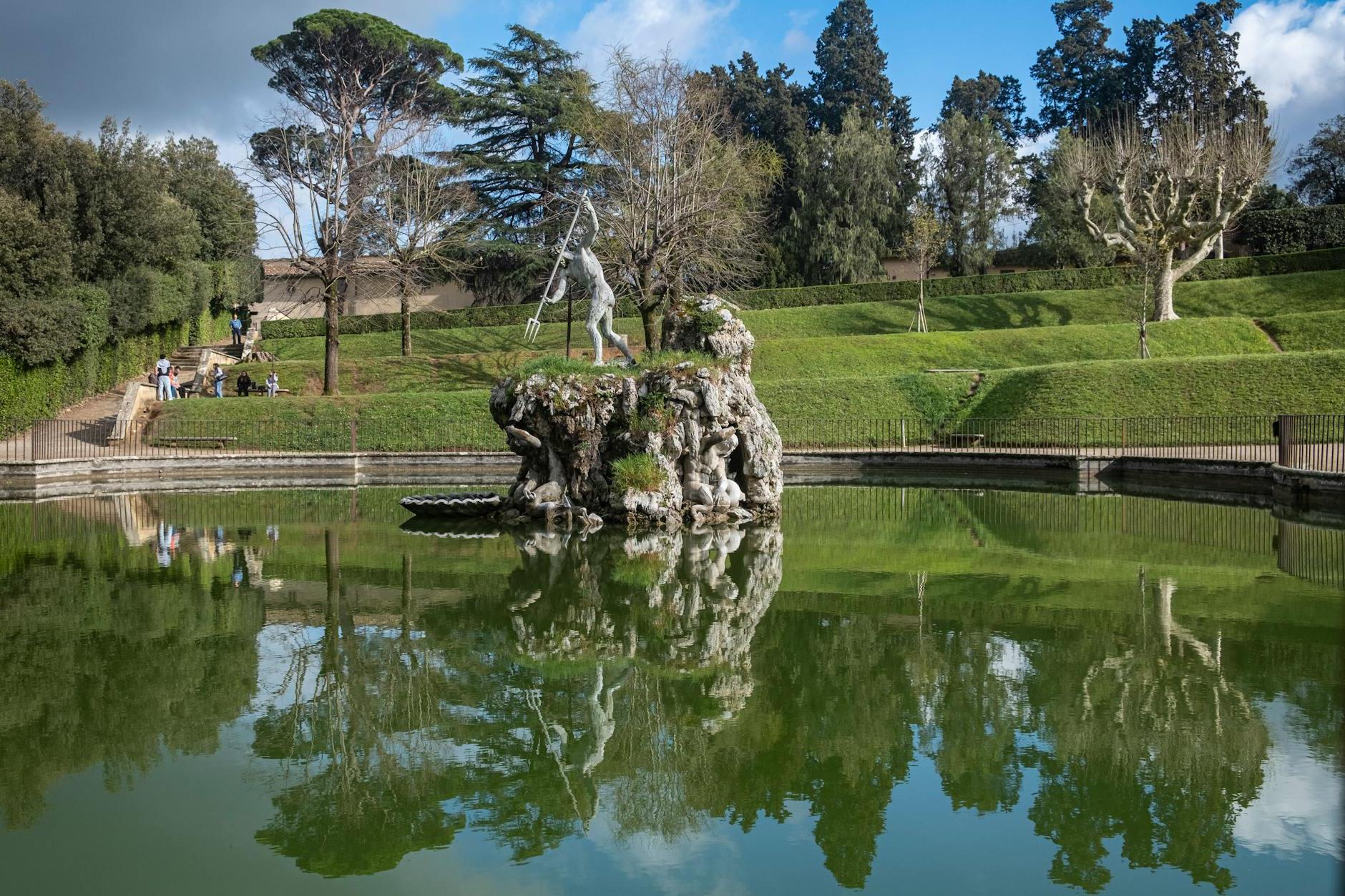
When visiting Florence, the Palazzo Pitti is a must-see for anyone interested in art, history, or stunning architecture. This grand palace was once the residence of the Medici family and now houses some of the most important museums in Florence. To get there, you can easily walk from the Ponte Vecchio across the Arno River. It’s a straightforward route and offers a picturesque approach to the palace.
Once at Palazzo Pitti, be sure to visit the Boboli Gardens, a breathtaking example of Italian Renaissance gardens, sprawling behind the palace. These gardens offer a serene escape with beautifully sculpted landscapes, fountains, and sculptures. Inside the palace, the Palatine Gallery is a highlight, with its collection of Renaissance art, including works by Raphael and Titian. Also, don’t miss the Royal Apartments, which give a glimpse into the lavish lifestyle of its former royal inhabitants. Remember, the sheer size of Palazzo Pitti and its gardens means you’ll need plenty of time to explore, so plan accordingly and wear comfortable shoes!
8. Piazzale Michelangelo
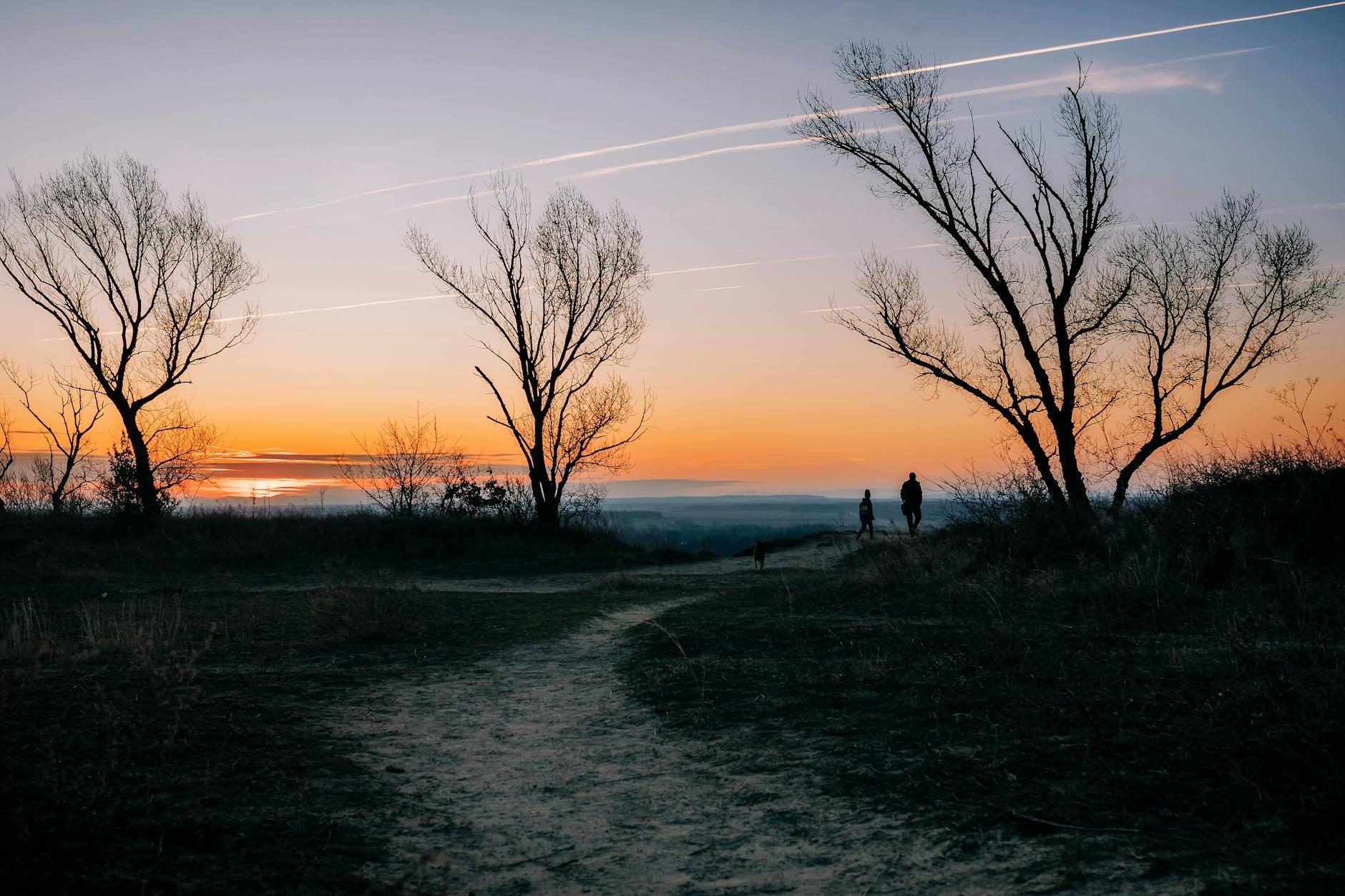
When you visit Florence, make sure to add Piazzale Michelangelo to your list! It’s a famous square high up on a hill, offering the most breathtaking views of Florence. Imagine seeing the whole city, the Arno River, and the majestic Duomo from above, especially stunning during sunset. Getting there is part of the adventure. You can take a pleasant hike up from the city center, or for a more relaxed journey, hop on bus 12 or 13. Don’t forget to bring your camera; this spot is a photographer’s dream. Also, pay attention to the bronze replica of Michelangelo’s David in the middle of the square, reminding you of the rich art and culture that Florence embodies. Visiting Piazzale Michelangelo offers not just a visual feast but a moment of reflection on the beauty and history of the city.
7. Bargello National Museum
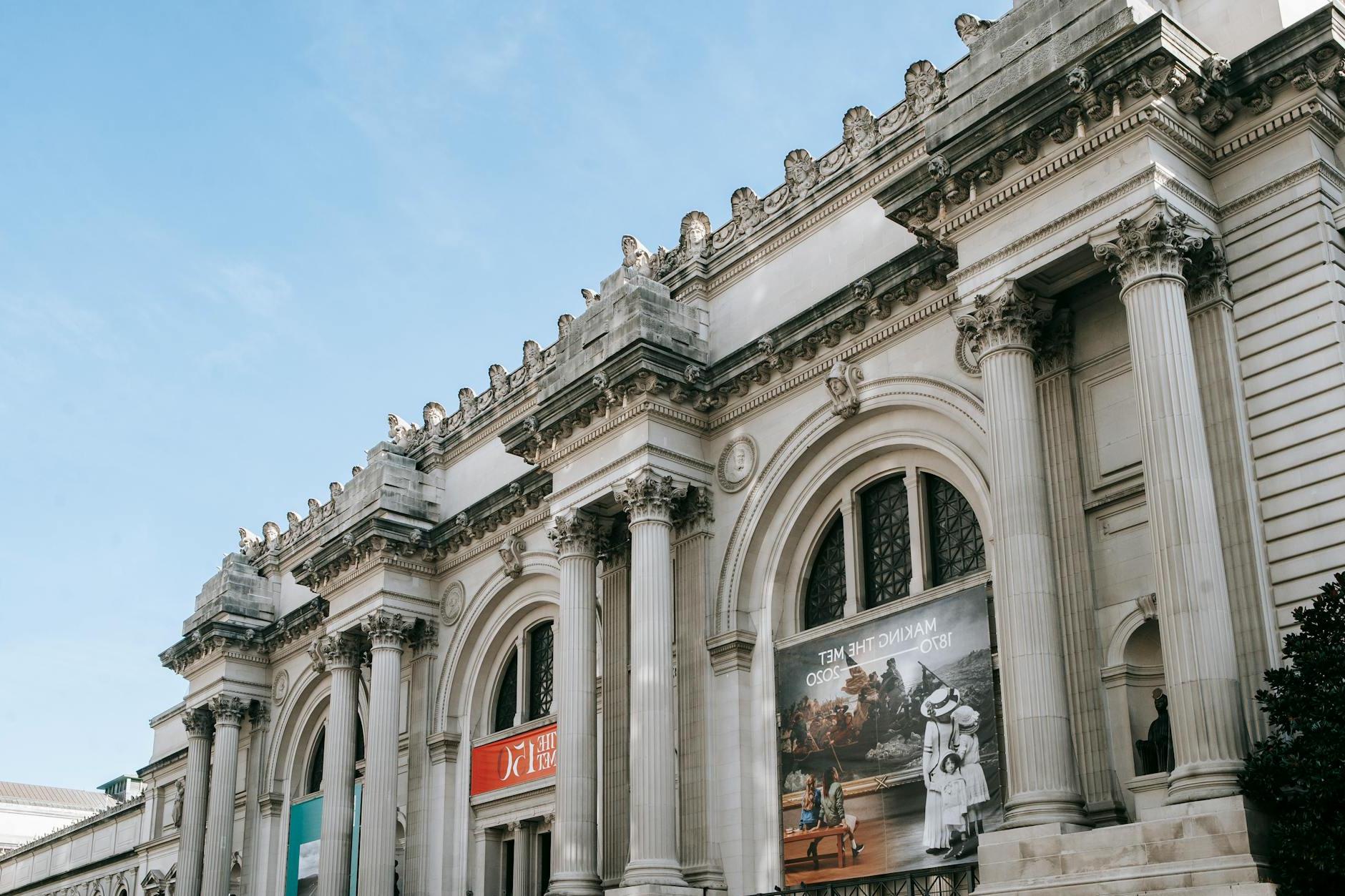
When you’re wandering through the enchanting streets of Florence, make sure to visit the Bargello National Museum, a treasure trove of Renaissance sculpture that’s absolutely unmissable. Nestled in the heart of the city, just a short walk from the Piazza della Signoria, getting there is a breeze; you can easily reach it on foot, immersing yourself in the city’s historical ambiance along the way. This remarkable museum is housed in one of the oldest buildings in Florence, and it’s where you’ll come face to face with masterpieces by renowned artists like Michelangelo, Donatello, and Cellini. Don’t miss Donatello’s ‘David,’ a masterpiece that marks a significant moment in art history, showcasing the beauty of expression and form. The Bargello isn’t just a museum; it’s a journey through the splendor of the Renaissance, inviting you to step back in time and marvel at the genius that shaped the world of art.
6. Boboli Gardens

When you’re exploring Florence, make sure to visit the Boboli Gardens, a true Renaissance masterpiece that promises to enchant you with its beauty and history. This sprawling green oasis sits right behind the Pitti Palace, offering a peaceful retreat from the city’s bustling streets. To get there, you can easily walk from the Ponte Vecchio or take a short bus ride, making it an accessible haven in the heart of Florence. Once inside, be amazed by the intricate sculptures, fountains, and the neatly designed landscapes that have inspired many over centuries. Don’t miss the Buontalenti Grotto, a fascinating, artificial cave filled with sculptures and mosaics, and make sure to climb up the garden’s hill for a breathtaking view of Florence. Visiting the Boboli Gardens is not just a stroll through a park; it’s a journey through history and art, a must-see that beautifully complements the cultural richness of Florence.
5. Galleria dell’Accademia
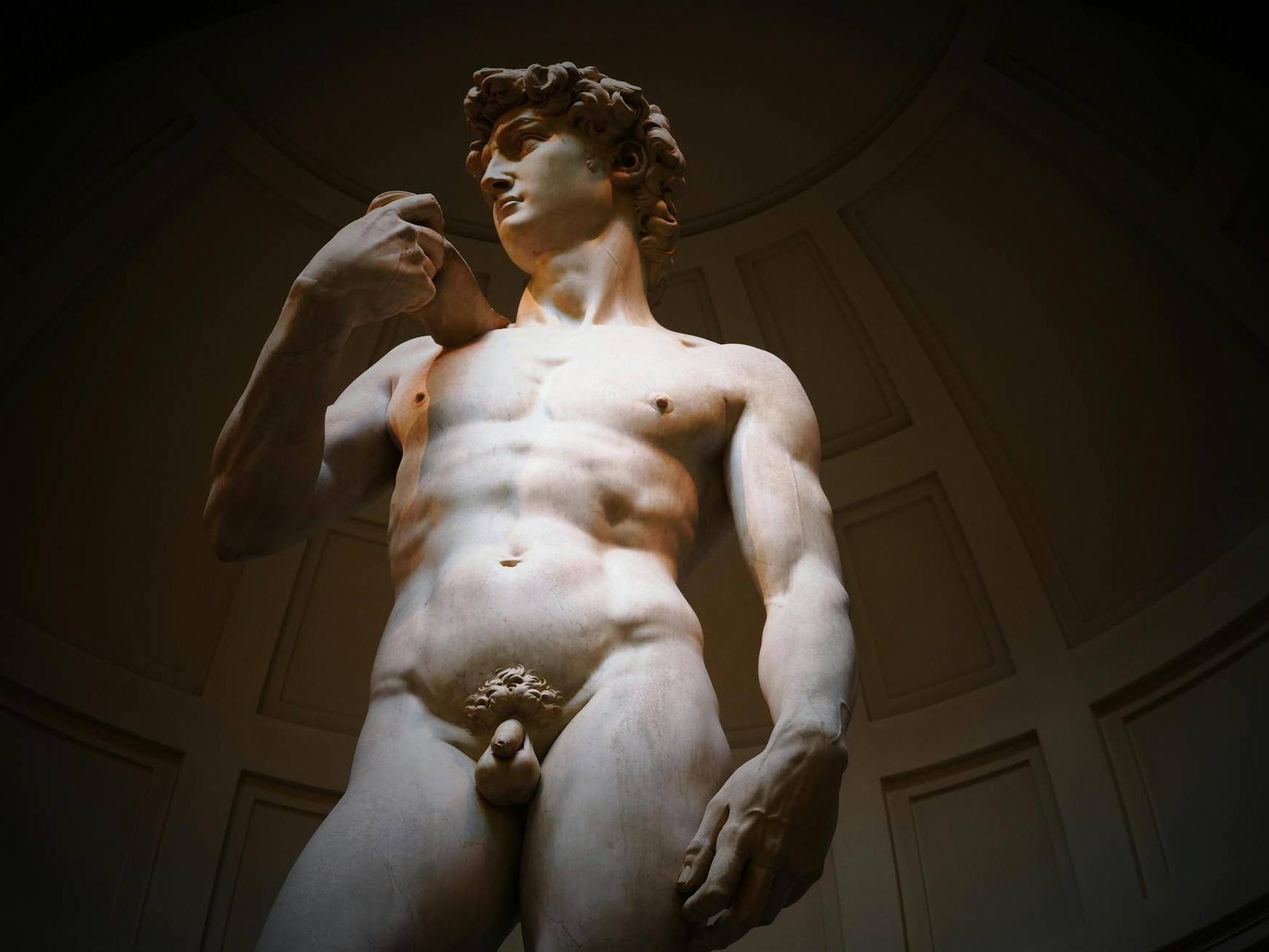
When you’re wandering through the historic streets of Florence, a visit to the Galleria dell’Accademia is absolutely essential. Why, you ask? This iconic gallery houses some of the most important pieces of Renaissance art in the world, including the breathtaking statue of David by Michelangelo. To get there, it’s quite straightforward. If you’re in the city center, you can easily walk as Florence is a very walkable city. Alternatively, you can catch a bus — the ATAF lines 1, 17, and 23 all stop nearby. As you explore, besides the awe-inspiring David, make sure you don’t miss other key highlights like the Hall of the Colossus and the Museum of Musical Instruments. Remember, it’s popular and can get crowded, so consider booking your tickets in advance to skip the lines and make the most out of your visit.
4. Ponte Vecchio
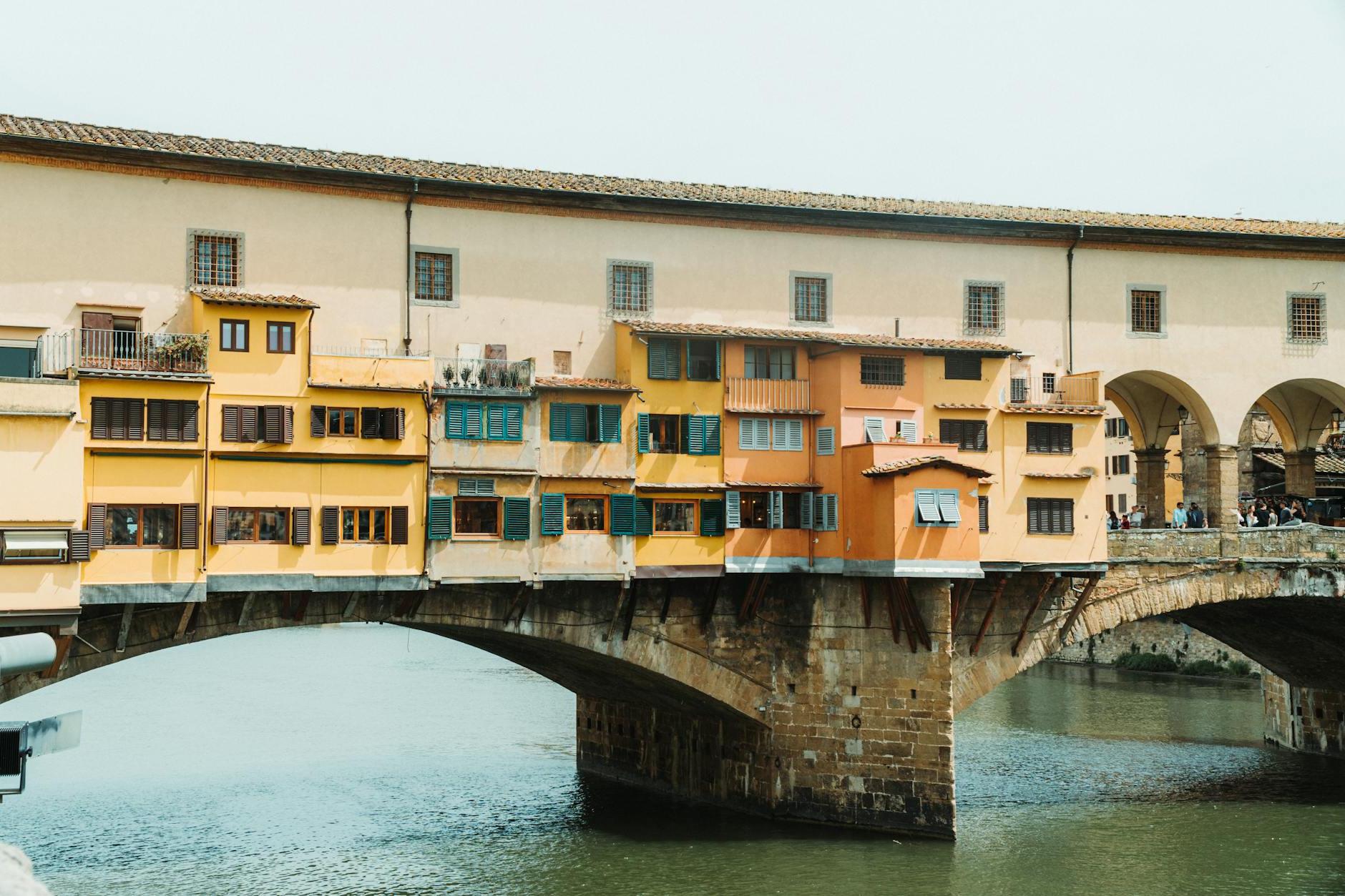
When you’re in Florence, a visit to Ponte Vecchio is a must. This iconic bridge, with its history stretching back to Roman times, is not just a way to cross the river but a journey through the heart of Florence’s rich past. Lined with jewelry shops that hark back to the days of the Medici family’s rule, its unique charm is undeniable. Getting there is easy; if you’re in the city center, it’s just a leisurely walk away. Amidst the cobblestone streets, you’ll find yourself drawn to the vibrant atmosphere of Ponte Vecchio, crossing the Arno River at its narrowest point. Pay attention to the bustle of local life, the stunning views of the river from the bridge, and the captivating Vasari Corridor above, which adds a touch of Renaissance intrigue. Whether you’re soaking in the architectural beauty or hunting for a timeless piece of jewelry, Ponte Vecchio offers a glimpse into the soul of Florence.
3. Piazza della Signoria
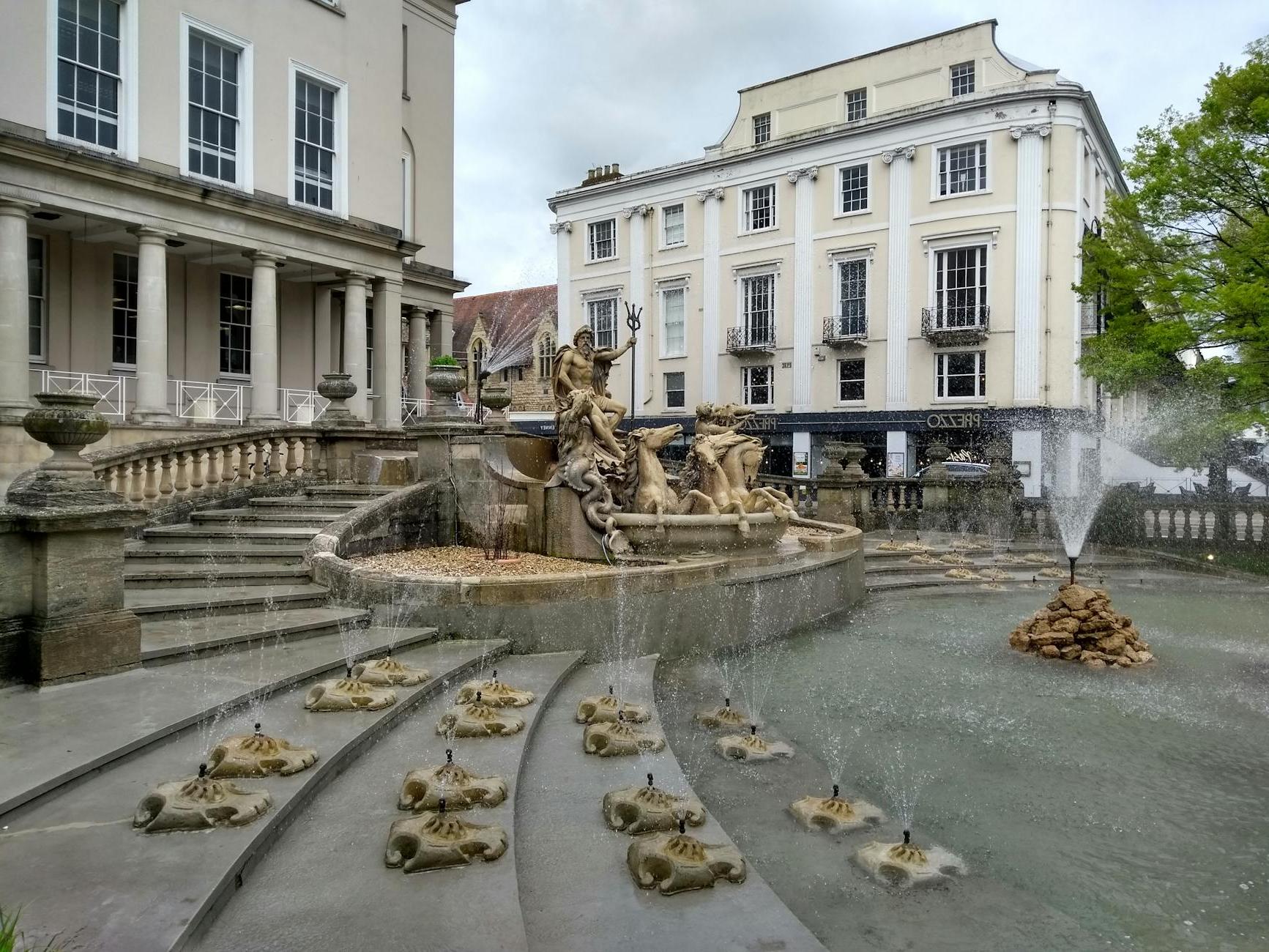
When you’re exploring Florence, you absolutely must visit Piazza della Signoria, a true heart of the city’s social life and history. This iconic square is not just a meeting point but a grand open-air museum, showcasing magnificent statues like the replica of Michelangelo’s David and the stunning Neptune Fountain. To get there, it’s easiest on foot as Florence is a walkable city, full of narrow, charming streets. If you’re near the famous Duomo, it’s just a 5-minute walk southwest. Pay special attention to the Loggia dei Lanzi, an outdoor sculpture gallery on the square’s edge, where you can marvel at the craftsmanship of Renaissance art up close without paying a dime. Whether it’s your love for history, art, or just the bustling vibe of Florentine life, Piazza della Signoria will leave you captivated.
2. Florence Cathedral (Duomo)
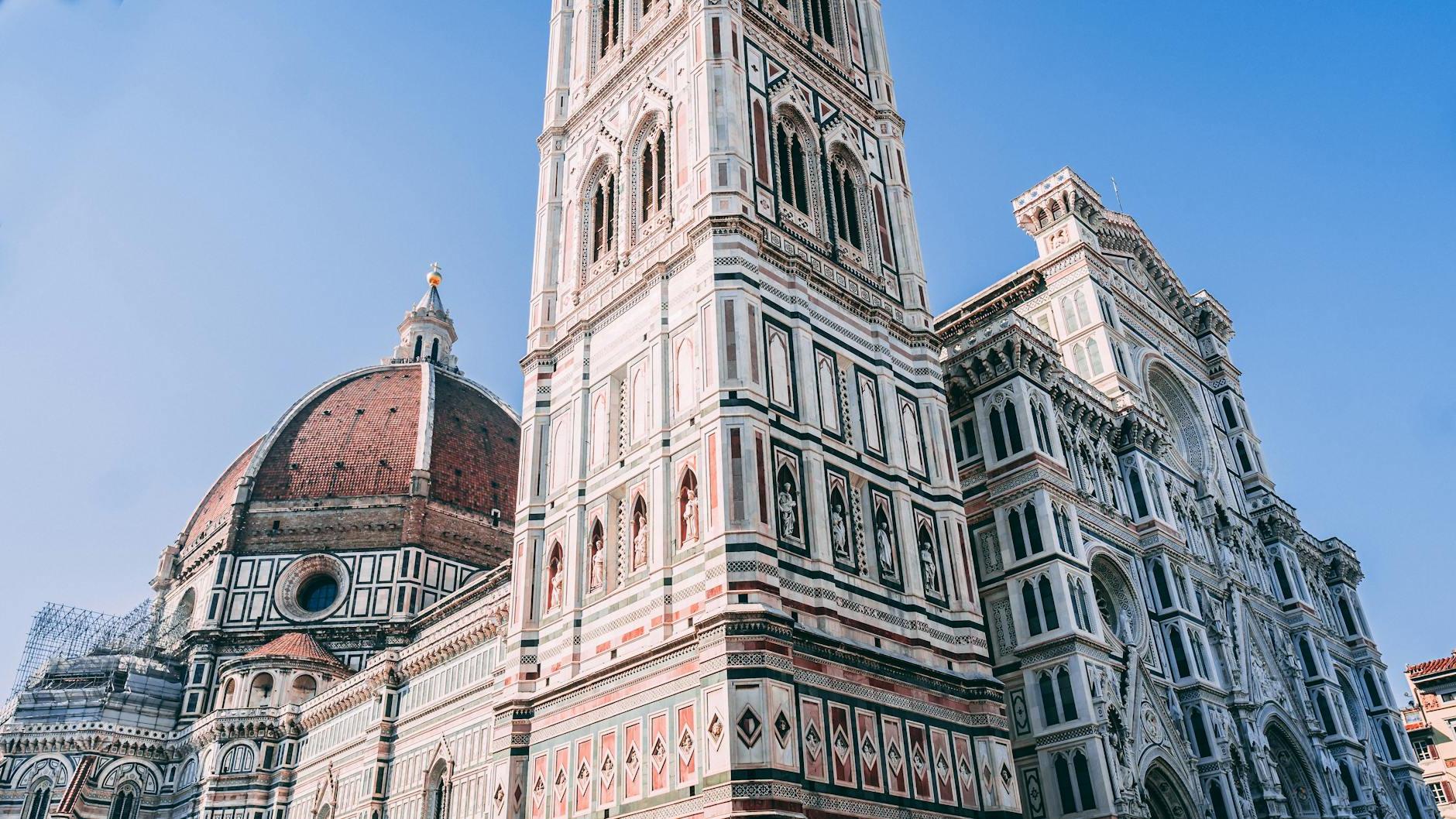
When you visit Florence, the Florence Cathedral, famously known as the Duomo, is a must-see masterpiece of Renaissance architecture that you simply cannot miss. Its magnificent red dome, designed by Filippo Brunelleschi, is not just a symbol of Florence but an engineering marvel that changed the course of architectural history. To get there, Florence is well-connected by public transport, but the most enjoyable way is to walk, as the city’s historic center is compact and pedestrian-friendly, allowing you to soak in the Tuscan ambiance. Key things to pay attention to include climbing the Duomo itself for breathtaking city views, marveling at the intricate facade, and exploring the interior’s stunning frescoes. Remember to also visit the adjacent Bell Tower and the Baptistery to complete your visit, each boasting their own unique designs and historical significance.
1. Uffizi Gallery
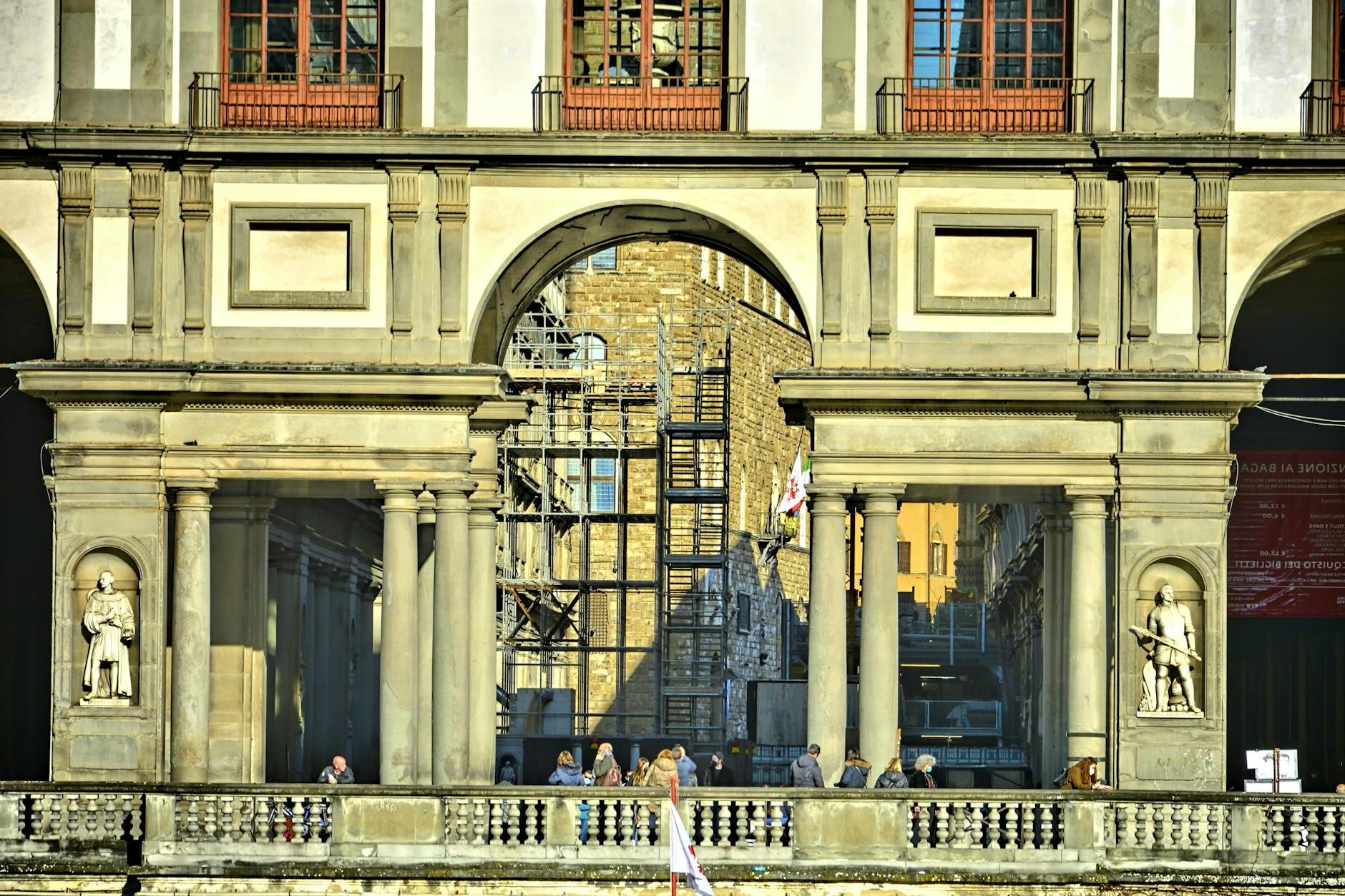
When you’re wandering through the enchanting city of Florence, paying a visit to the Uffizi Gallery is an absolute must for any art lover. Nestled near the picturesque banks of the River Arno, this gallery is home to an awe-inspiring collection of Renaissance art, including masterpieces by legends such as Leonardo da Vinci, Michelangelo, and Botticelli. To get there, simply head to the historic heart of Florence. It’s easily accessible on foot from the Duomo or by taking a bus to the nearby stops. One of the major highlights you shouldn’t miss is Botticelli’s “The Birth of Venus,” a painting that captures the beauty and mythology of the Renaissance in stunning detail. Remember to book your tickets in advance to skip the long lines, especially during the tourist season, for a smoother visit. The Uffizi isn’t just an art gallery; it’s a journey through the history and soul of Florence, making it an unforgettable part of your trip.
Frequently Asked Questions
1. What is the best time of the year to visit Florence?
The best time of the year to visit Florence is during the spring months of April and May or in the fall, from September to October. These periods offer comfortable temperatures, perfect for exploring the city’s outdoor attractions, like the famous Boboli Gardens or the iconic Florence Cathedral. The city is less crowded, and you’ll experience Florence with a more local vibe. If you’re looking to save some money while traveling, consider visiting during the winter months, from November to March. Though it can be colder and some attractions might have shorter hours, you’ll find that hotels and flights are often significantly cheaper. Plus, experiencing Florence with fewer tourists around can provide a different, more intimate experience of the city.
2. Should I rent a car in Florence?
If you’re planning to explore Florence, the question of whether to rent a car is an important one. In short, within Florence itself, renting a car might not be the best idea. The city’s historic center is largely a Limited Traffic Zone (ZTL), meaning only residents and authorized vehicles can enter. If you accidentally drive into these zones, you could face hefty fines. Furthermore, Florence is known for its narrow roads, challenging traffic, and limited parking, which can make driving and finding a spot for your car quite stressful. On the other hand, Florence boasts an efficient public transport system that includes buses and trams, making it easy to get around the city and explore its beauty without a car. Taxis are also readily available, offering another convenient option for getting from point A to point B. So, unless you’re planning to venture into the Tuscan countryside or other cities, relying on public transport and taxis is generally the more hassle-free choice in Florence.
3. What are different ways to get to Florence?
Getting to Florence, the heart of Tuscany, is quite straightforward, offering you a variety of options to suit your travel preferences. If you’re flying in, the nearest airport is Florence Airport (FLR), though Pisa Airport (PSA) is also a popular alternative, being just about an hour away. Upon arrival, you can easily hop on a bus or a train; both cities have great connections to Florence, making your transfer smooth and hassle-free. For those who prefer the flexibility of rail travel, Florence’s main train station, Santa Maria Novella, is well-connected to Italy’s extensive train network. This means you can catch direct and frequent services from major Italian cities like Rome, Milan, and Venice. Should you decide to drive, scenic routes await you. From Rome, the A1 motorway takes you straight to Florence in about three hours, while from Milan, it’s a bit longer, around four hours. Driving from Venice offers not only an enjoyable ride but also a chance to explore the beautiful Italian countryside on your way to Florence. No matter how you choose to travel, getting to Florence is relatively easy and adds to the anticipation of exploring this stunning Renaissance city.
4. Are there things to do with children in Florence?
Absolutely! Florence is a great destination for families, offering a variety of children-friendly activities. Explore the wonders of science and technology at the Leonardo da Vinci Museum, where interactive exhibits bring the genius’s inventions to life. Families can also enjoy a stroll through the Boboli Gardens, a perfect spot for a peaceful walk and a picnic, offering plenty of space for kids to run around. Don’t miss the chance to climb up to the top of the Duomo or Bell Tower for a fun adventure and a bird’s-eye view of the city. For a sweet treat, stop by one of Florence’s famous gelato shops. And, if your kids love animals, the Florence Zoo, located in the beautiful Giardino di Boboli, is a fun stop. These activities not only entertain but also educate, making Florence an enriching experience for children.
5. Is Florence safe to travel to?
Yes, Florence is generally safe to travel to. Like in any bustling city, it’s important to take precautions, especially in tourist-heavy and crowded areas. Keep your valuables out of sight to avoid attracting unwanted attention, always be aware of your surroundings, and it’s a good idea to familiarize yourself with local emergency contact information just in case you need it. Florence is known for its rich culture and stunning architecture, and by staying alert and cautious, you can enjoy all the beauty and history it has to offer with peace of mind.

